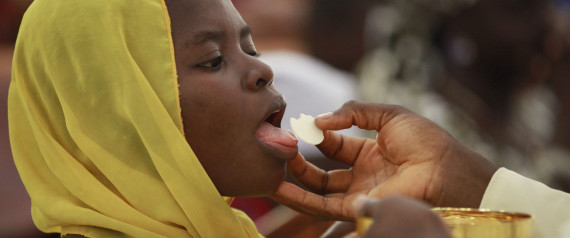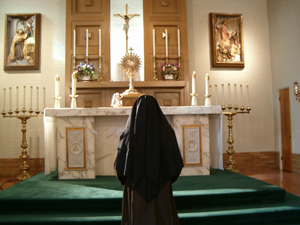Ask a Carmelite Sister...
Question: Dear Sister, My prayer experiences don’t seem good enough or holy enough, long enough or intense enough. Do you have any suggestions as to how I can pray better?
Answer: Dear Friend, Yes, I do have a few suggestions. That's easy...
First of all, I suggest not using the expression “prayer experiences” at all. Hit the delete button on that one. A lot of people tend to speak about their prayer experiences. To me, it’s not the best choice of words. I believe that to use the expression “prayer experience” lessens, or taints my prayer. Prayer isn’t just “an experience.” It is so much more.
I actually went to the dictionary to check out the word “experience” in order to respond to this question and was amazed to see the long list of definitions:
1.involvement in something over time.
2.knowledge or skill that is acquired.
3.the sum total of somebody’s experiences
4.something that happens to somebody
5.knowledge from observation.
6.to have personal knowledge of something
7.to feel something.
All these definitions are right and good – in their proper place, but not for a description or explanation of prayer. Why?
To Carmelites, prayer is relationship. It is time spent with Someone you love. It is that coming to know Another in a deeper way – to pray is to speak and then to listen; to communicate on a more personal and profound level and to grow in understanding, respect and appreciation of the other. St. Teresa of Avila puts it this way. “Prayer is nothing else than an intimate friendship, a frequent heart-to-heart conversation with Him, Who we know loves us” (Life, viii).
Not good enough or holy enough? Not long enough or intense enough? It is one way of looking at it, but it makes me think of asking you a question. What does love look like? Does it not have a thousand faces? The face of love can sit quietly in sorrow, sympathy and compassion. Or it can radiate with joy and laughter and grimace in steadfast, faithful determination. When someone truly falls in love, I don’t think there should be, or are, such questions. They minimize and actually detract from the power of loving. To be with, to share with, to companion the One you love is love. Love is more than an experience. Well, love is love.
This same concept can be applied to prayer. God and I, as impossible as it seems and as unworthy as I see myself, can be in relationship – just as any person to another. It is mind-boggling to think about. It is actually THE relationship for which I was created. The Baltimore Catechism put it this way.
Q. Why did God make you?That is a very personal answer, it seems to me. It summarizes the reason for our existence. I am reminded of a phrase in our profession of vows when we make our perpetual profession to God. The entire formula of vows is very beautiful, but the expression that comes to mind right now is the following – “in intimacy with God through prayer.” Yes, that’s it. That says it.
A. God made me to know Him, to love Him, and to serve Him in this world and to be happy with Him in the next.
There is a four volume book set, Divine Intimacy by Father Gabriel of St. Mary Magdalene, OCD. It is a Carmelite classic on prayer. The original was one thick book and has now been broken down into the four volume set. Note the name. It is the same concept; however Father Gabriel doesn’t say Divine Relationship or Divine Friendship. No, his classic goes straight to the core, the height, the goal, which is intimacy. Just to meditate on this thought is a very fruitful meditation.
So, now to come more directly to your question, you don’t need to feel holy, or good, or any feeling. A dad doesn’t feel good getting up before dawn to get ready to go to work. A mom doesn’t feel good about taking care of her children when she herself is ill and would rather be in bed. A nun doesn’t feel so great, either, getting up before dawn to pray. But, ah! This is love. We do this out of our love, for the one we love, and ah! … that also is prayer.
I think we could sum up St. John of the Cross by saying that it is our WILL which chooses, what we see, what we hear, what we do. Our will is at work when we pray. We can will to pray when we don’t feel like it, just as in the examples above of the dad or mom or nun. We’ve heard the expression “suit up and show up.” We can use it, also, for prayer. And if we “suit up and show up” on a daily basis, on both good days and bad days, I would add, that, then, would be a powerful prayer, indeed – the prayer of a friend, who comes to be with God not looking for any gain or consolation, but is content to be with God.
Then, I wouldn’t be surprised if some day, during prayer, you would open your eyes and look at your watch and say, “My God, where did the time go? Can it be that I have been with You so long; it seemed but a few moments.” I can hear St. Teresa of Avila saying, “You are His friend now, His close friend, and He is taking you deeper into Himself in the intimacy with God through prayer. When that happens, the time passes oh so quickly.”
Until next time,
Sister Laus Gloriae, O.C.D.



No comments:
Post a Comment